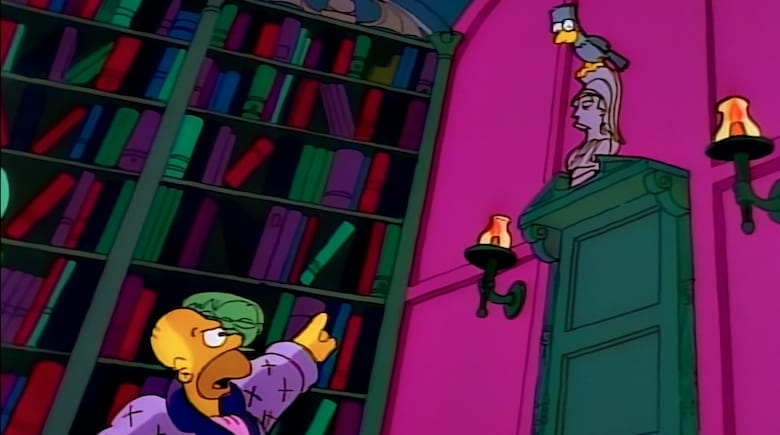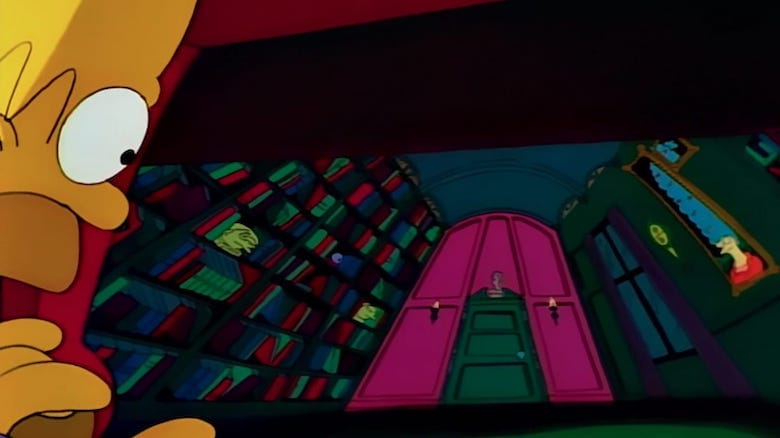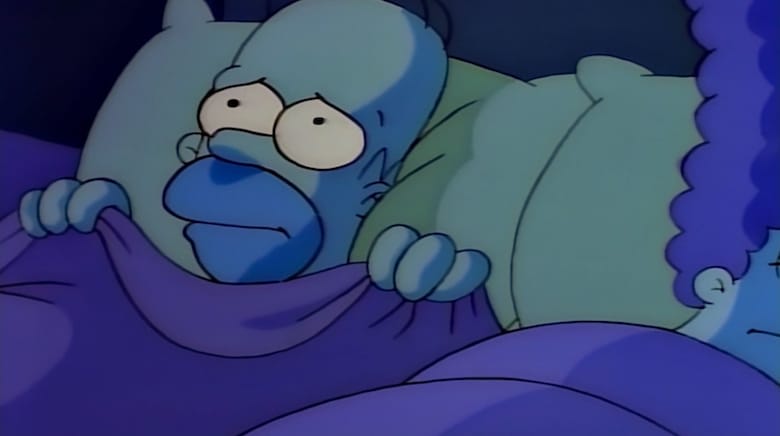If there’s one thing that all fans of The Simpsons can agree on, it’s that the early episodes of the Treehouse of Horror series are utterly timeless. The cartoon’s takes on horror classics are both comedic and analytical. The episodes point out all the triumphs and follies of horror as a genre. Each segment pokes fun at our favorite films and works of literature while still displaying a deep reverence for the subject matter.
There is perhaps no finer example of this approach than in the very first installment of Treehouse of Horror. “The Raven” is the segment that stands out the most. More than just a parody, the Simpsons’ spin on the Poe classic is a surprisingly faithful rendition. A closer look, however, reveals a few clever gags that take on classic horror tropes.
Summary of The Simpsons’ The Raven
If you’ve ever read Poe’s original poem, you more or less already know what happens in Treehouse of Horror’s “The Raven” segment. Unlike other installments in the series, this one merely inserts Simpsons characters into the story rather than restructuring the story to fit into the show’s universe. It’s actually received praise from teachers for its accuracy, with some even working it into their curriculum. Such is the quality of the writing in the early seasons of The Simpsons.
The segment begins with Lisa completely unperturbed by Bart’s attempts at scary stories. She counters by reading to him “The Raven,” a far more mature tale. Both she and her brother are blissfully unaware that their own father is sitting outside the treehouse and listening. As she begins narrating, we leave Evergreen Terrace and enter into the world of Poe.

Homer fills the role of the grieving main character of the poem. As he drifts in and out of sleep, his grief over his lost love Lenore (who is, of course, represented by Marge) turns to fear. His paranoia begins to reach uncontrollable heights as he thinks he hears someone knocking at his door. When he opens it, he sees only darkness.
So far, so good. Following this, the titular Raven himself enters. Rather than having the Treehouse of Horror’s Raven assume a terrifying form, it is instead played by Bart. Its non-stop “nevermores” begin to drive Homer mad. (For his part, the real Bart in the treehouse cleverly interjects “eat my shorts” just as the Raven says “nevermore.” He’s got a nice ear for syllabic consistency, it turns out.)
Homer then imagines angels, played by Maggie and Lisa, coming into his room to turn the situation into a happier one. Bart quickly rejects that idea with one more “nevermore.” Homer’s rage takes hold, and he launches into a fruitless attack on Bart in Raven form. He winds up knocking himself out, and Bart looks upon him and laughs.
Trope 1 – The Psychological Horror Takes Hold
So, yeah, the Treehouse of Horror “The Raven” more or less sticks to the script. In a way, it’s a perfect story for the Simpsons to interpret in such a literal way. The dynamic between the poem’s narrator and the Raven makes total sense reframed as the relationship between Homer and Bart. We know that Bart is a constant source of anguish and mental torment for Homer, much like the Raven is for the narrator.
Many analysts like to cite “The Raven” as one of the early works of Psychological horror, and that’s because the narrator exists in a space that is commonly called the psychological torment zone. It’s a trope that we’re all familiar with. We see it all over different kinds of horror, from The Babadook to The Yellow Wallpaper. A character is stuck in a physical place (or a situation) where they are pushed to the edge of madness… or sometimes beyond it.

That is precisely what is happening in “The Raven,” though in a bit of a roundabout way. The narrator is going mad with grief, and depending on your reading, the metaphorical or literal Raven character turns his chamber from a space of personal respite to a space of terror and psychological breaking.
For Homer in normal episodes of The Simpsons, Bart serves as his personal Raven. He certainly loves him, but he can never get away from the fact that the boy drives him totally insane. Bart’s snappy comebacks and refusal to bend to authority undermine Homer, fracture his masculinity, and make him question himself. The Raven, with just a word, does more or less the same thing to Poe’s narrator.
It seems like just a funny coincidence that “eat my shorts” matches with “nevermore” syllabically, but it really couldn’t be more fitting. Just think about Bart staring Homer in the eyes and saying, “Eat my shorts.” As hilarious as it sounds, is that really any different than what the Raven does?
Trope 2 – “You know what would be scarier than nothing?”
Another common trope that we see all the time in horror is the “and no was there!” trope. There are plenty of classic films where the protagonist answers the phone only to just hear complete silence on the other end. There are also movies where ominous knocking leads to no one being at the door at all. We all become instinctually tense when a horror movie presents the possibility of a threat and then negates it. (Another cartoon to parody this trope was, interestingly enough, Spongebob Squarepants.)
The use of this trope is a pretty major part of Poe’s poem. The rapping and tapping at the narrator’s chamber door turn out to be “nothing more” than “darkness there,” making the narrator question his mental state and the audience question how they will end up actually being terrified. Is he crazy, or was there really someone with bad intentions coming for him?
— FOUNDATIONS OF HORROR —
Further explore these subgenres & tropes. more>>
#Psychological horror | #Comedy horror

The Simpsons “The Raven” portrays this scene exactly, but there is one small change. When Homer opens his chamber door to see no one there, the real Bart sitting in the treehouse is completely unimpressed. “You know what would be scarier than nothing?” he asks Lisa. “Anything!”
To a horror fan, this quick cutaway gag is absolute gold. We all instinctively understand that this trope is terrifying, but it’s hard to put into words why it is. And when Bart so succinctly puts it like that, it’s hard to argue with him. But, of course, you can’t just show the monster outright; that only scares children. Real horror masters know how to, as Lisa puts it near the beginning of this segment, “establish mood.” This trope is a great way to do that.
Trope 3 – The Subjectivity of Horror
One of the most fun parts about this episode of The Simpsons “The Raven” pays homage to a gothic horror mainstay while still giving some great laughs. But the best part of the entire episode comes after this segment.
Bart, in his typically unimpressed fashion, thinks the story is lame. He and Lisa run off to go to bed, completely unscared after a long night of would-be-scary stories. Homer, on the other hand, remains sitting wide-eyed outside of the treehouse. When he finally goes inside, he has trouble sleeping, even as Marge tries to calm him down by telling him that his fears are “just children’s stories.”

On the surface, this is just a funny way of showing Homer’s childish mind. But it also does a great job of demonstrating the subjectivity of horror. The kids weren’t scared of the monsters and the tales of madness, but their father was deeply frightened. Something about those stories had an effect on him. That’s the beauty of horror as a genre. When you finally come across that short story or that film or that 19th century poem that really gets to your core, it helps you learn about yourself and what really makes you tick. It shows you what keeps you up at night. It doesn’t matter if it’s a children’s story.
When I was a kid, the The Simpsons “The Raven” segment didn’t scare me, but I know it did scare plenty of others. Now, I just love it for the way it masterfully gives life to a classic while poking fun at some of the genre’s tendencies. And that’s what Treehouse of Horror is all about, isn’t it? As the standout segment from the first ever Treehouse of Horror, “The Raven” set the tone for many Simpsons masterpieces to come.
Last Updated on August 1, 2021.

